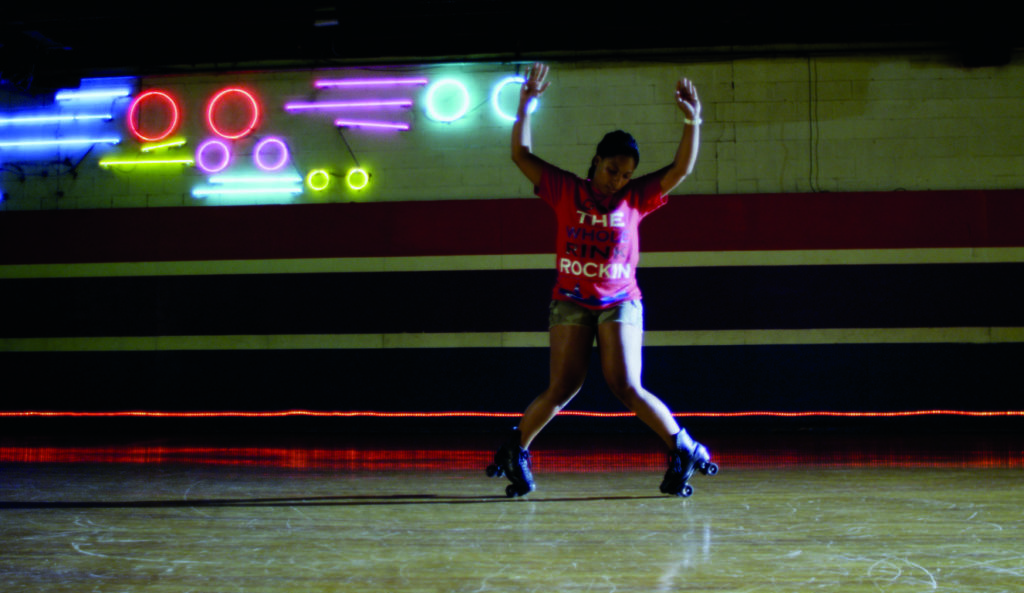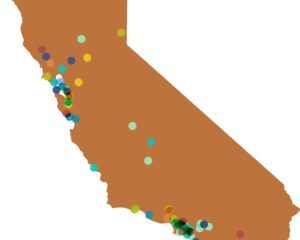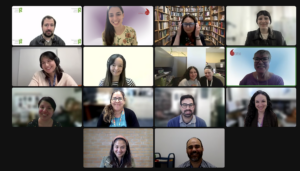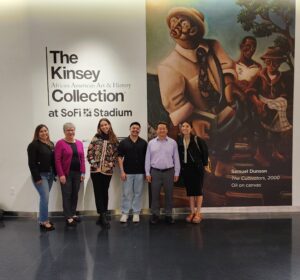We at California Humanities are big fans of the new film by co-Directors Tina Brown and Dyana Winkler United Skates and are proud to have been one of the project’s earliest funders. The film focused on African American skate culture through the decades including two much-loved rinks in Los Angeles that figure heavily in the storyline. It premiered at the 2018 Tribeca film festival and is currently streaming on HBO. We talked to filmmakers Dyana Winkler and Tina Brown and LA-based skater Phelicia Wright, who appears in the film, about their experiences making the film, the incredible reception it’s gotten, and how they hope it’ll change the landscape of skating in the US. Below, read part one of the interview with Dyana and Tina, where they talk about the film’s themes of civil rights and community, how they became a part of the skate community and what makes United Skates a humanities film. Stay tuned for further installments.
Were you skaters before you started making United Skates and/or do you consider yourself skaters now?
Tina Brown: We each have our own pair of skates, and we filmed on skates during the five years we took to make this film. We were pushed at high speeds by skaters who steered us around the rink while filming. We’ve broken a lot of camera parts, sprained body parts and been knocked over. But when you’ve seen the level of skating at these National Skate parties, which is where we spent a lot of our time filming— that’s hard even for a fairly good skater, they’re like NBA level skaters.
You brought so many different layers of history and context to examine skate culture. What makes United Skates a humanities project to you?
Tina: In the 80s the rinks in LA were declared neutral territory by the gangs—the Bloods and Crips. There are all these fascinating elements that have come out of this world that nobody really knows about.
Dyana Winkler: We interviewed a former Crip gang member who said to us, “I dare you to think of any other place where you go in there as a child and you get something out of it; you go in there as a teenager and you get something different out of it; you go in there in the middle of your life and you get something else out of it; and you want to go back until the day you die.”
That’s really is what’s happening under the roof of these roller rinks. It’s not just skating. It’s the children that are being watched by those around them. It’s the grandparents that are playing dominoes and go to listen to the music. It’s a whole community that is taking care of each other. Looking at the humanity and the humanities aspect of this world is really important to us.
The film also explores the decline and divestment in skating venues. Was there a particular rink or story that really solidified that direction for you?
Dyana: We were brought to a special celebratory night at a rink and could feel the magic in the room, but we didn’t think there was enough to sustain a feature-length film at first. Also, not being African American we felt like it was not our story to tell, so we actually walked away in the beginning.
It was only later that we started to understand the more controversial parts of the story. We realized that, for example, almost every rink that we went into in the entire country still had white nights and Black nights. TheySkaters were treated differently and being policed and stereotyped on Black nights. On top of that, the rinks and this beautiful culture were disappearing: three rinks were closing a month. When we would come back to a rink that we had shot at it would no longer be there.
There was so much injustice around what they were experiencing and yet there was so much celebration and love and joy. We realized there was a lot of complexity there. Roller skating is a metaphor for the Black experience in this country in many ways, and that was when we decided to dive all the way in.
In the film you detail how the rise and decline of Black nights, also known as “adult nights,” intersected with the history of civil rights for African Americans in this country. Was there anything about that connection that surprised you?
Tina: When we got the California Humanities grant we also got some humanities advisors on board. One of our advisors is Dr. Victoria Wolcott. She’s a professor of history who spent ten years researching and wrote a book called Race Riots and Roller Coasters. In it she mentions that the three hardest public spaces to desegregate during the Civil Rights era were public pools, amusement parks and roller-skating rinks. We have to thank California Humanities for making sure we had her as an advisor because she became a sounding board for us.
Dyana: A lot of that research didn’t make it into the film, but it really helped ground us as filmmakers in understanding the situation. It was a time in our history when white flight was happening all over the country. Suddenly, African Americans were allowed into all of these spaces and a lot of amusement parks and lavish public pools closed because the white clientele stopped showing up.
Roller rinks saw that and realized, “Hey, if we integrate all of our nights all these establishments are going to close down. We have to find a way to keep them segregated.” They were no longer allowed to call them “Black nights” and “white nights,” but they started using coded language: They would call white nights things like “Top 40’s Night” and “Family Night,” and they would call Black nights names like “Soul Night,” “Martin Luther King Jr. Night.” The line was drawn in the sand. African-Americans stayed on the nights that they were allowed to go and that has carried through to today.
Although we’re quick to say that segregation is bad, the irony is that many of the African-American skaters we talked to told us that on their own nights, they didn’t have to abide by white rules, listen to white music, or play by white standards. They were free to be their complete selves and that is how this culture was able to thrive. That probably wouldn’t have been the case if all the nights were integrated. This entire beautiful world that were able to capture in this film was created on these separate nights.
How has this story changed your relationship to the skate community?
Dyana: In the beginning we were incredibly aware of the fact that we were not from this community. It was quite an honor that they were giving us access and continuously encouraging us to keep shooting. Tina and I hesitantly stepped in and could feel the massive responsibility to get it right.
Later, we had a private screening of the film at a national skating event in Detroit. There were skaters from everywhere: St. Louis, Chicago, Atlanta, all over the country. I was more nervous at that screening than I was at our Tribeca Premiere with John Legend and Salt’n’Pepa in the audience.
Tina: We both sunk into our seats after the cinema went dark and it started, like, “Oh my gosh here we go.”
Dyana: People started cheering pretty quickly and laughing. At the end the standing ovation was like no other that we’ve had to date—it must have been three minutes long. It meant more to me that the film was validated by this room of people than by the industry.





